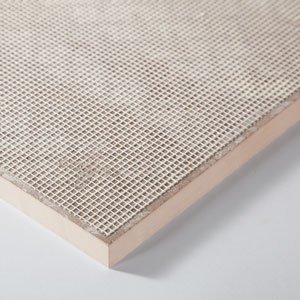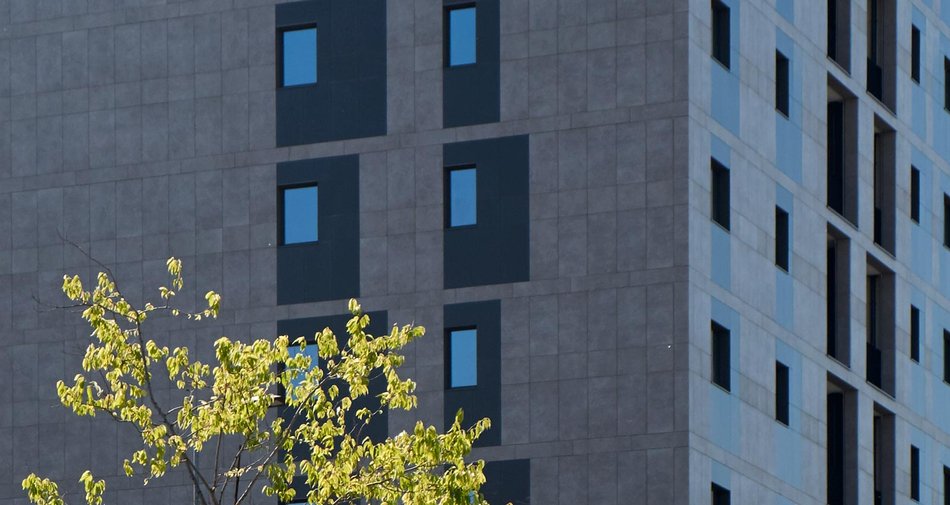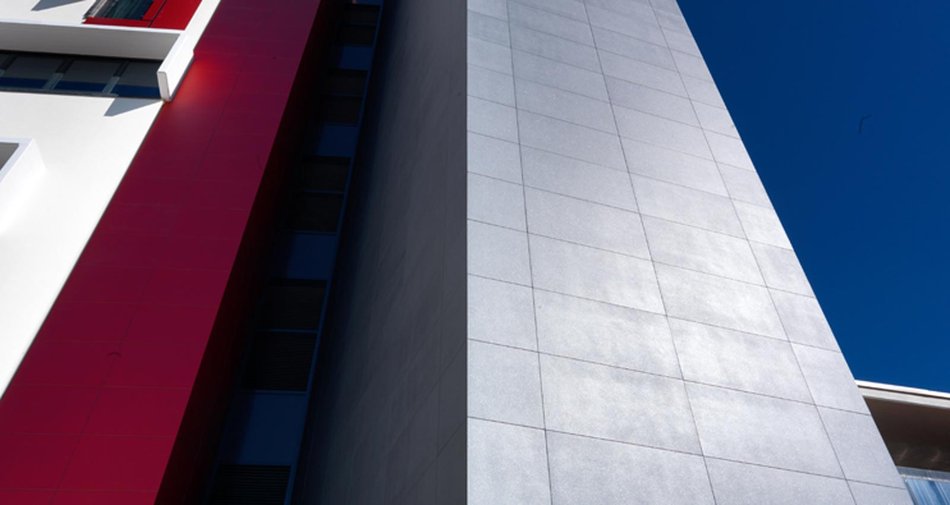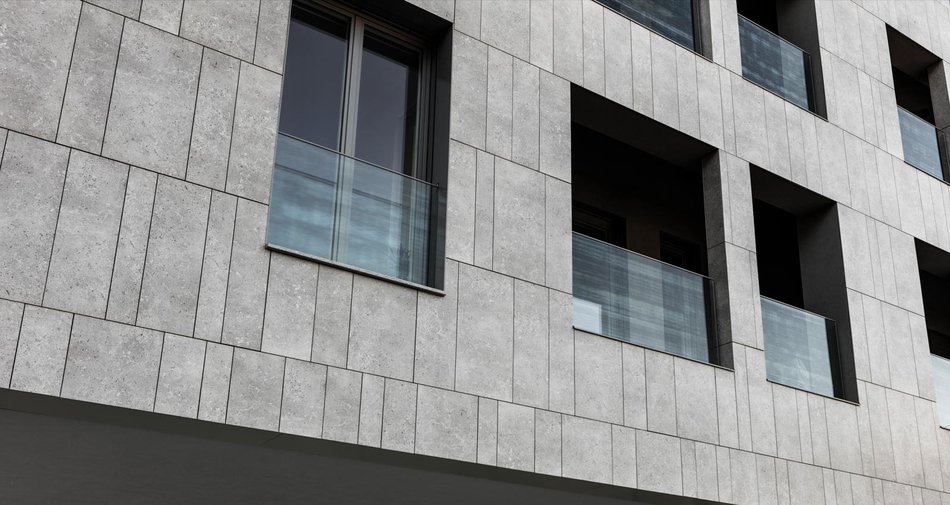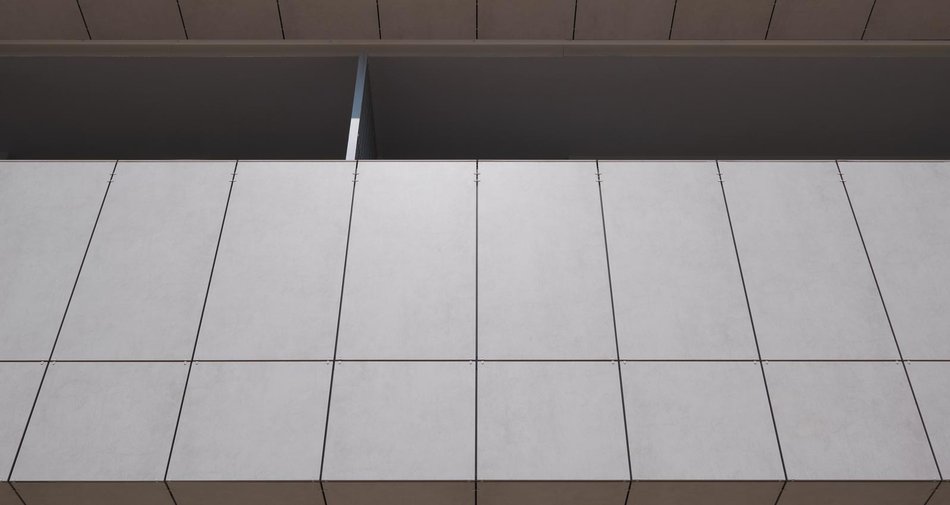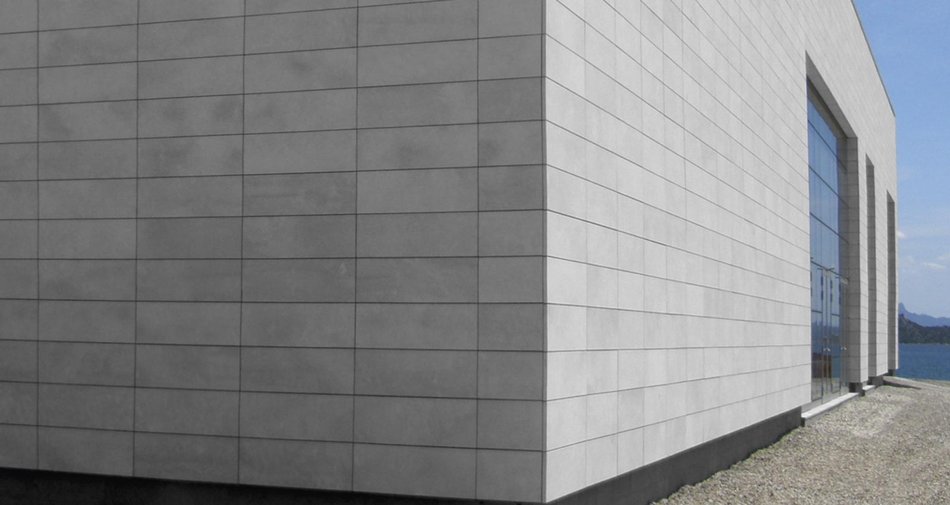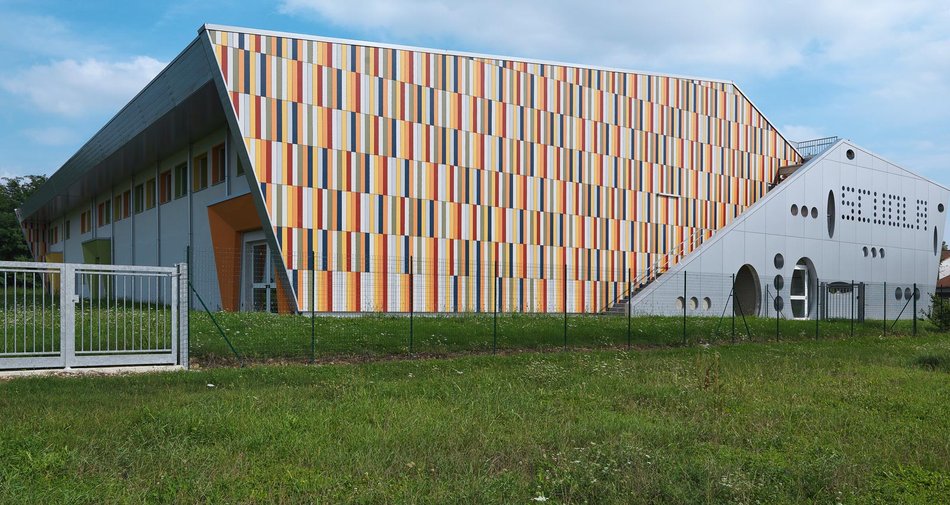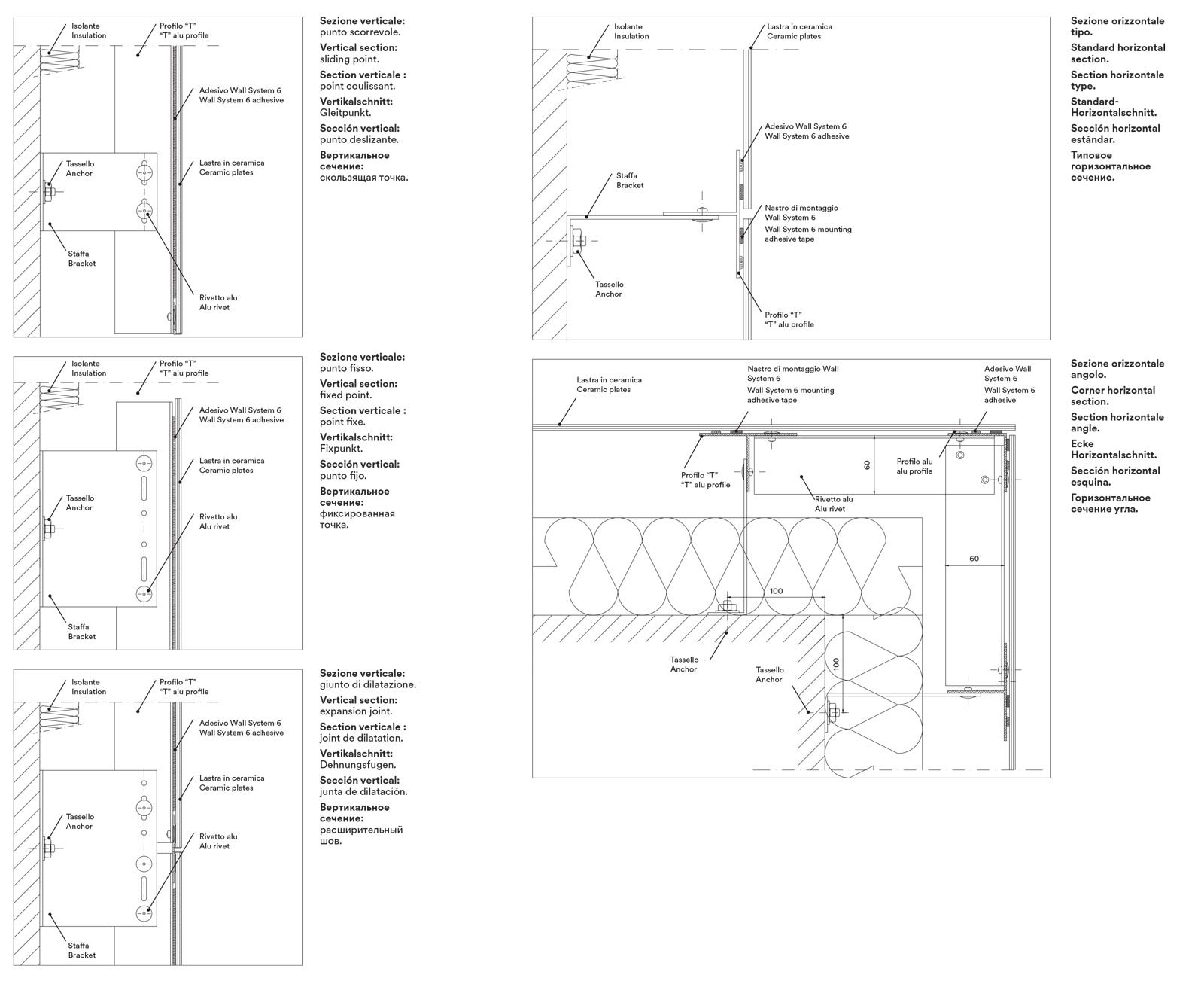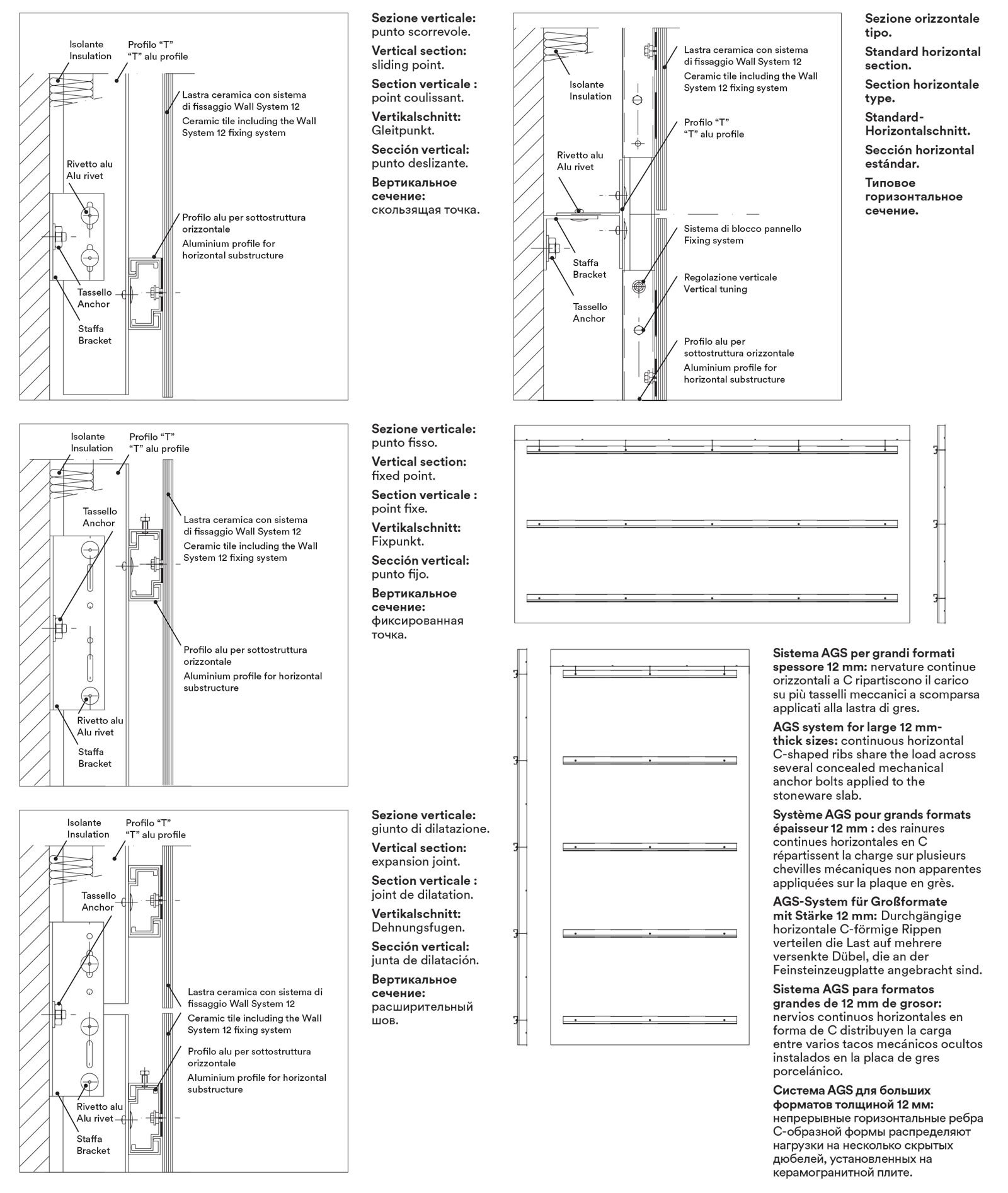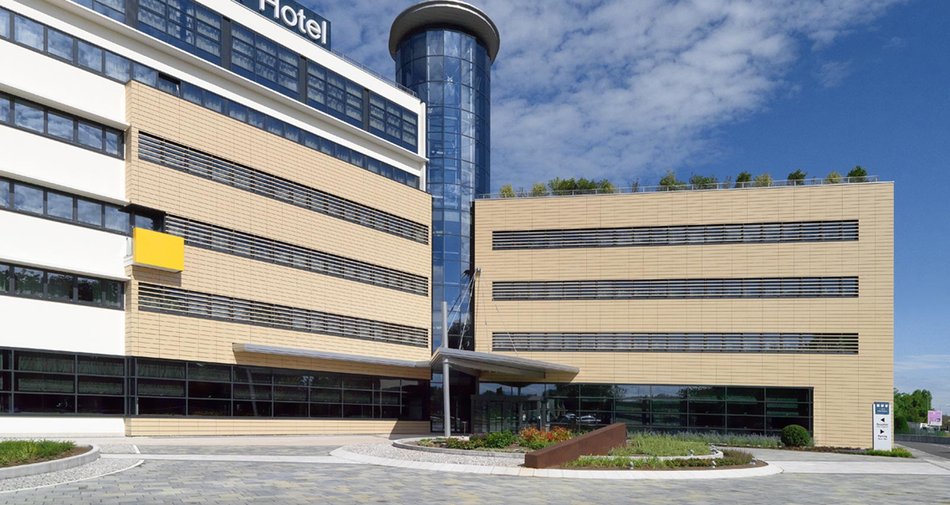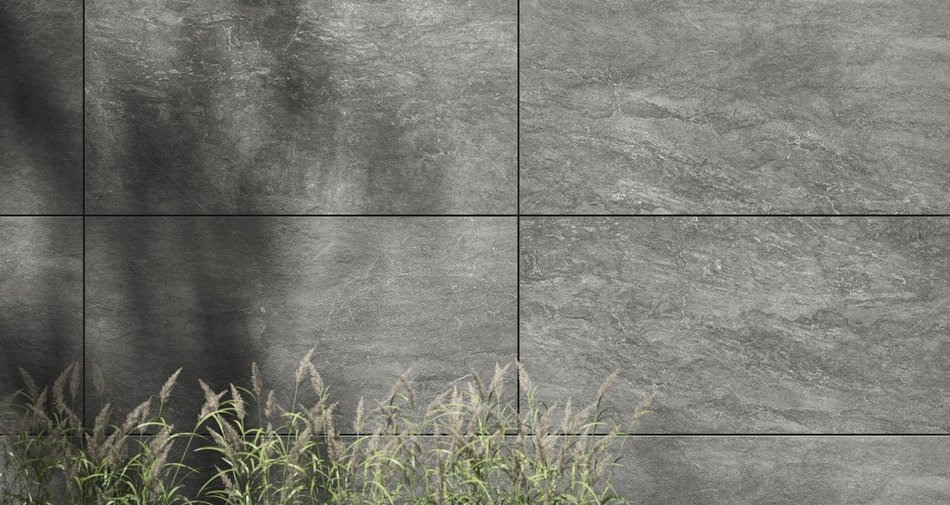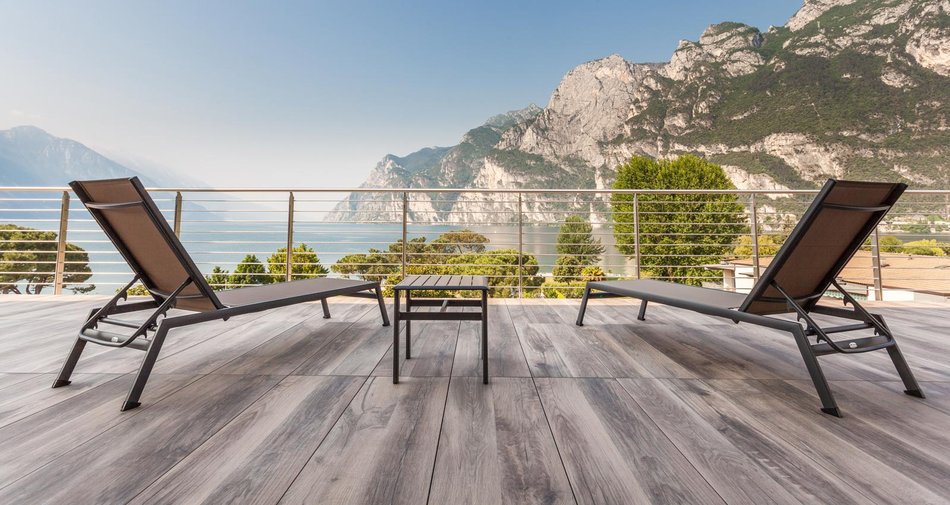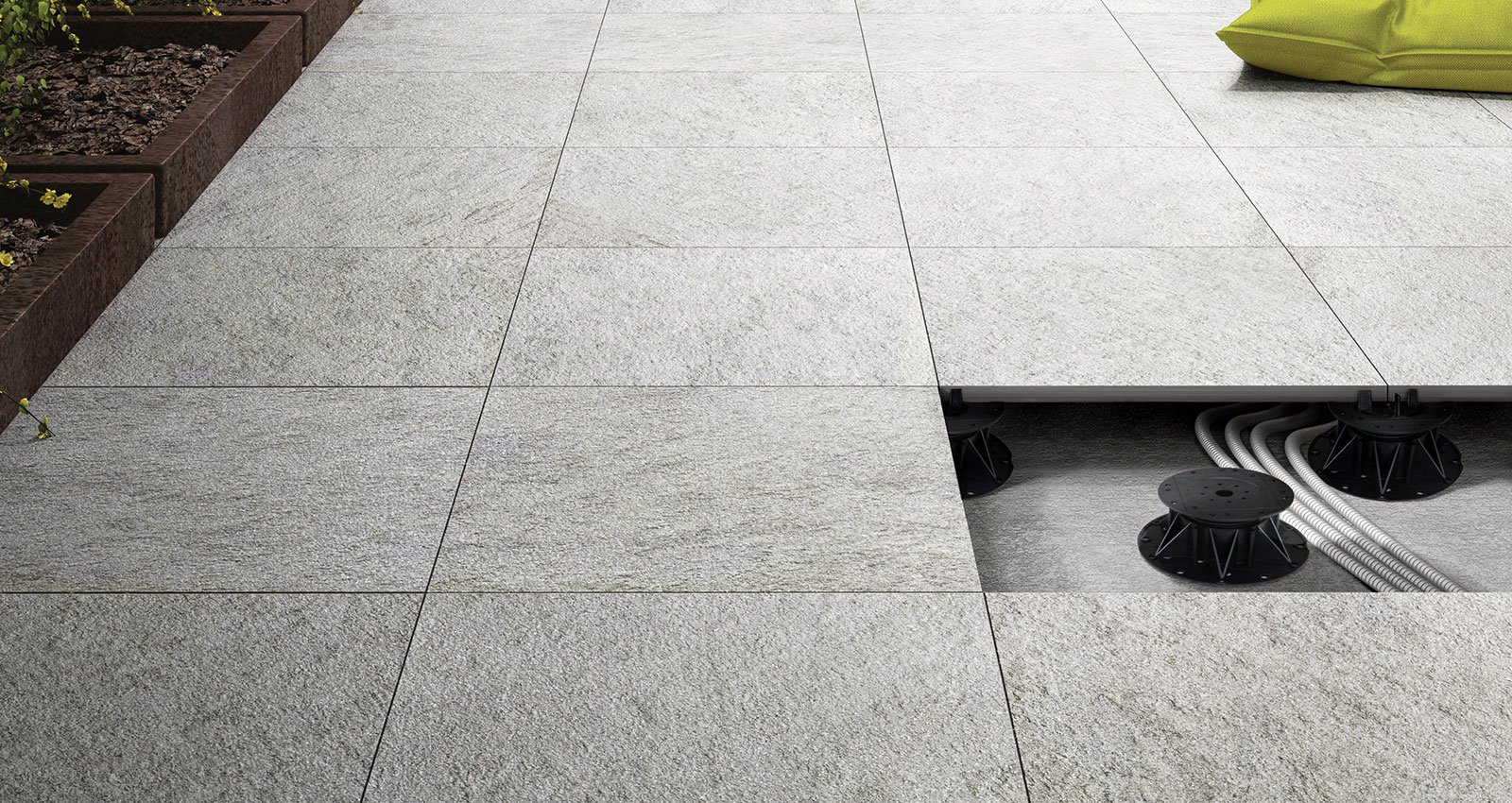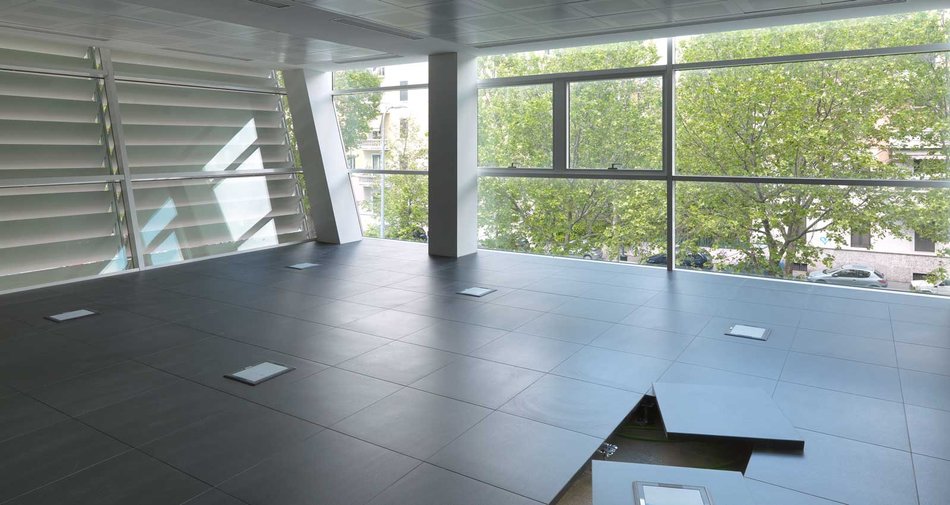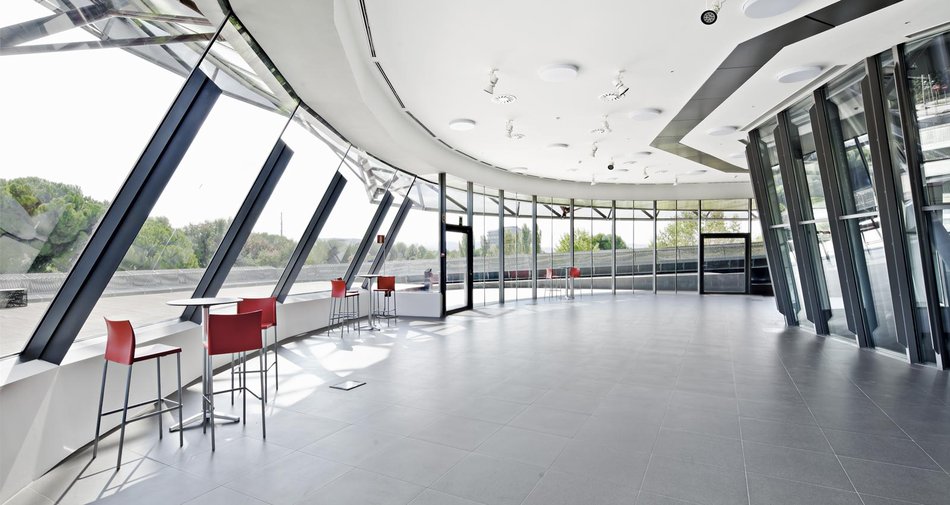Ventilated facades
- Marazzi Grande Ventilation Facade
Ventilated wall system
The ventilated wall system is the most effective outdoor covering technology for solving the problem of providing protection against humidity and the weather, while offering thermal and acoustic insulation. The system guarantees outstanding performance in terms of temperature and humidity, without the need to interfere with the internal layout of the building or to alter its interior finishes. The reasons for its rising popularity include the considerable energy savings that it offers combined with its ability to improve living comfort.
- Marazzi Grande Ventilation Facade Technology 2
Technology of Ventilated Facade
A ventilated wall consists of multiple layers and these cause an ongoing process of natural ventilation through the facade. This covering technology removes excess of humidity and plays a vital role in keeping the building cool in summer and warm in winter by controlling heat loss. Besides this technology enables to fully exploit the considerable aesthetic potential offered by exterior wall coverings. This allows to face the most demanding design challenges with no significant constraints on architects.
The ventilated facade is composed of three basic elements called functional layers:
- Thermal insulation applied to exterior of the curtain wall.
- Substructure supporting outer facing.
- Outer facing separated from insulating layer by a cavity several centimeters in depth.
- Marazzi Grande Ventilation Facade Advantages 2
The advantages of ventilated walls
- Enhanced interior climate
- Soundproofing
- Condense elimination
- Aestethic optimization of facades
- Protection against weather conditions
- Thermal insulation of the structures
- Heat bridging elimination
- Ease of maintanance
- State incentives for energy saving
Thermal Performance
The thermal properties of the system are based on the basic principle of the “chimney effect”, obtained by leaving an air gap several centimetres deep between the perimeter wall of the building (covered with a layer of insulation) and the outer face. The change in the density of the air inside the air gap, due to the heat radiated by the outer covering, forces the air to move upwards and triggers a flow of natural ventilation from the bottom to the top. Sunlight reaches the facade, but its affect is significant in the summer.
In this case, while part of the thermal radiation affecting the outer covering is reflected back towards the outside, the amount of heat that penetrates the air gap is largely eliminated via the flow of air, greatly reducing the amount of heat absorbed by the building and the amount of humidity stagnating on the perimeter walls. Ventilated walls are a layer of protection with high thermal inertia in both seasons: in summer, they offset the heat (i.e. less heat enters the building by conduction and only at night, as the temperature is lower) and in winter they extend the time it takes for the perimeter wall to cool down.
- Marazzi Grande Ventilation Facade Anchoring System 2
AGV Visible Anchoring System
The AGV visible anchoring system was the first system offered by Marazzi. It is still very modern due to its simplicity, low cost and efficiency. The external surface is supported by stainless steel visible hooks, which can be coloured to match the chosen finish. The hooks are fixed to the stonework by brackets at set distances that take into account the size of the outer cladding modules. The AGV system can be used on flat and vertical surfaces, as well as on inclined and curved (polygonal) surfaces.
- Marazzi Grande Ventilation Facade Panel System 2
Module Panel System
Modul Panel is a concealed anchoring system that involves the pre-assembly of the slabs on a panel, with metal profiles and expansion anchor bolts, which is then installed on a structure consisting of vertical uprights and cross members. Pre-assembly of the modules ensures reduced installation times and lower component costs. The Modul Panel system is particularly efficient for hooking ceramic modules in
the rectangular size installed horizontally.
- Marazzi Grande Ventilation Facade Key Panel System 2
Key Panel System
The Modul Panel’s philosophy also inspired this system, in which rectangular slabs are vertically preassembled and applied by means of expansion anchor bolts and open horizontal profiles to a substructure identical to that of the AGS system.
- Marazzi Grande Ventilation Facade System 6
Wall system 6
Wall System 6 allows the installation of 160×320, 120×240 and 120×120 cm 6 mm-thick porcelain stoneware slabs on a ventilated wall without visible fixing elements. This innovative technology exploits the high performance of the latest-generation construction adhesives, assisted by mechanical supports. The covering’s large slabs are fixed with a structural adhesive to a substructure with vertical uprights.
- Marazzi Grande Ventilation Facade System 12
Wall system 12
Marazzi combines the lightness of the 6 mm thickness with the solidity of the 12 mm slabs. An innovative technology, perfected and customised in a new factory that only produces porcelain stoneware slabs, enabling the creation of extremely sophisticated surfaces that do not change over time and are even more resistant. The 12 mm-thick slabs are hooked to a ventilated wall through a system similar to the AGS concealed anchoring system with an anchor bolt and mounting system with uprights and stringers. The 12 mm-thick slab is reinforced with aluminium profile bars by mechanical fasteners in order to distribute the acting loads in multiple areas.
- Marazzi Grande Ventilation Facade Sun Screens 2
Sun screens
Brise-soleils in Marazzi porcelain stoneware are an architectural solution with excellent appearance and functional values. Marazzi Engineering offers the important capability for integrating brise-soleil solutions with the ventilated curtain wall technology, bringing balance and harmony to architectural projects while meeting the rules and criteria for ecosustainable design. The relationships between solid volumes and empty spaces can be manipulated to create effects that upgrade the whole look of the building’s exterior, conceived as the sum of totally integrated architectural features. There is also the functional benefit of providing protection against direct sunlight.
Marazzi Engineering gives architects the freedom to choose between two different system solutions, fixed or adjustable, meaning that the angle of inclination of the brise-soleil blades can be varied in response to geographical, seasonal and building orientation parameters.
PLUS FACTORS
- Optimal control of the solar radiation reaching the building in the form of light and heat, generating:
Impressive energy savings - Improved internal comfort levels
- Insulation against nocturnal heat loss
- Improved air recycling
- Integrated styling of blank
- Wall and window sections of the building
- Low maintenance
- More attractive building appearance thanks to the choice of a wide range of ceramic products available within the marazzi offering
- The material is resistant to thermal shock and weather
- The ceramic wall covering material used retains its technical and appearance characteristics over time.
- Marazzi Grande Ventilation Facade Protect Wall 20 2
Protect wall 20
Protect Wall 20 is an innovative, highly effective system for protecting the skirting of new or existing buildings that undergo thermal upgrading through the use of a jacket. The base of buildings is one of the parts that is most exposed to shocks, weather, rising damp and degradation. The 20 mm-thick porcelain stoneware coating solves all these problems, removes the need for maintenance operations and gives the building greater value thanks to a complete range of aesthetic solutions. The anchoring of the skirting system is equivalent to that of the AGS concealed anchoring system, a guaranteed, efficient system that enhances the many advantages of ceramic slabs that are even more structurally resistant thanks to their extra thickness. The system is ideal for all buildings with any intended use.
Raised Floors
- Marazzi Grande Floors Hotelbellariva 002
The raised floor is a system of modular elements designed for the creation of floor coverings for buildings’ indoor and outdoor spaces. This technology is extremely practical because it creates a continuous void under the floor surface that can be utilized to route all technical systems. Thanks to its usage flexibility, easy and fast installation and diverse range of coverings, it can also be applied in building renovations and can even be installed on top of existing floor coverings.
- Marazzi Grande Floors Outdoor Use Installation
Raised floor technology
The raised floor is a lightweight dry construction system consisting of a floor surface and a support structure. The practical and functional support structure allows the removal of every single ceramic module, speeding up the inspection, modification and maintenance of the plant networks, while the system also boasts the advantages of Marazzi porcelain stoneware’s strength and aesthetic qualities.
- Marazzi Grande Floors Advantages
The advantages of raised floors
- Rapid execution in new buildings and for building renovation projects, with immediate trafficability of the floor surface
- Flexibility for distribution and positioning of technical plant, with easily inspectable utility lines capable of simple modification post installation
- Low costs in relation to the building’s life cycle
- Design flexibility, with the possibility of altering the original project rapidly, even during the execution stage
- Maximum versatility if rooms are converted for different purposes
- Can be integrated with other technical finishing structures such as partitions and false ceilings
- High level of aesthetic personalization in both the choice of finishing material and its colours and in the ability to create designs, logos and decorative motifs on request or inserts of different materials
- Availability of a broad range of accessories for personalization of the floor
- Marazzi Grande Floors Interior Composition
Composition of the raised floor for interiors
The raised floor is a technological system composed of five main elements:
- supporting structure
- core
- surface layer
- perimetral edge
- backing layer
Supporting structure
The combination of the horizontal and vertical parts supports the raised floor panel so it can be raised up higher than the building’s floor slab and be set level. The structure is in galvanized steel to prevent corrosion and consists of columns, crosspieces and gaskets:
1. Pedestal: has a stem, base and head and is the vertical, load-bearing part.
2.Gaskets: fitted between the panels and the stringers are designed to reduce noise and provide an air seal.
3. Stringer: is the horizontal, modular part that links the columns and was designed to improve the stability and rigidity of the structure, the system’s load capacity and its overall seal.
4.Thermal/acoustic insulation: insulating panels in thermobonded polyester fibre (supplied on request)
5.Impact noise insulation: multilayer backing membrane made of reticulated polyethylene and rubber (supplied on request)
Types of Support Structure
Different types of load bearing structure are possible by combining the various parts based on the load bearing needs and the layout of services and cables. Marazzi Engineering has focused on the development of high-performance solutions that have helped it expand the variety normally available on the market:
The TKS structure (no stringer): consisting of pedestal with 8-spoke radial head, where the panels are placed directly; a plastic gasket is fitted for less noise. Since there are no stringer, the columns in this type of structure are bonded to the sub-floor slab with specific glue.
The TKL structure (with stringer): the 8-spoke radial head pedestal are shaped so the 28 x 18 mm C-section stringer can be snapped into place. The snap-fastening instantly forms a solid link between the parts and speeds up the installation. Diagonal reinforcement stringer can also be added, if necessary, thanksto the special shape of the head.
The TKM structure (with medium stringer): pedestal with 8-spoke radial heads, shaped so the 28 x 38 mm C-section load-bearing stringer can be snapped into place. Again, the head of the columns allows for the addition of diagonal reinforcement crosspieces.
The TKC Structure (with heavy, closed overhead passing stringer): the pedestal have a cross-head with screws to lock the load bearing stringer in place using pressure. The load bearing stringer, where the heads of the columns rest, have a 50 x 25 mm rectangular section and various lengths: the side frames are 1800 or 3600 mm.
Core of the raised floor
This is the central part of the raised floor and it can be of two basic types depending on the construction material:
- In wood and resin chipboard featuring high density and high mechanical strength, with nominal thickness of 38 mm (type L38). This material has excellent properties in terms of low weight, economy, and ease of handling; in addition, it is in the lowest formaldehyde release class (E1).
- In inert material (anhydrous calcium sulphate) reinforced with high strength cellulose fibre, with nominal thickness of 30-34 mm (type K30-K34). The physical-mechanical characteristics and absolute safety in terms of the release of volatile substances make this material the best product for raised floors.
- Marazzi Engineering also offers a third solution: the Encapsulated Panel. This type of panel (23/29 mm thickness) consists of a calcium sulphate core – reinforced with cellulose fibres or with wood and resin chipboard – encapsulated in a hot-galvanized steel sheet coating which, by means of a double fold at the edge, increases the load capacity. The encapsulated panel is a technologically advanced system with high mechanical strength. It is very light and tough and
supports self-laying floor coverings.
Surface layer
The upper coating applied to the core comprises the floor surface and defines the floor’s aesthetic appearance. Marazzi Engineering can supply any material for this purpose, from the most classic to the most innovative: porcelain stoneware, resilient materials (rubber, linoleum, PVC), plastic laminates, natural stone or stone composites and real wood. Porcelain stoneware is the most suitable material for the panels’ surface finish thanks to its special resistance and excellent technical characteristics. Marazzi offers the widest range of porcelain stoneware surfaces that are perfectly suitable for the creation of raised floors, including in areas with heavy traffic.
Accessories
Accessories are available to interface the raised floor with its immediate surroundings and exploit its features fully.
These include:
- Indoor and outdoor ramps
- Indoor and outdoor steps
- Partition walls for sound-proofing, fire prevention or
air ducts - Front curtain walls
- Grills and perforated panels for ventilation
- Panels with grommets for electric wiring and data
cabling - Grommet hatches
- Raised or flush outlet boxes with electric sockets or
telephone points - Expansion joints
- Suction caps for lifting the panels
- Lateral finishes with contrasting strip for connection
to the wall - Structural Bridges
- Marazzi Grande Floors Outdoor Use Installation
Laying 20mm stoneware
The new Marazzi extra-thick 20mm stoneware is ideal for outdoor pavings, including raised pavings. Hard-wearing and resistant to thermal shock, loads and stresses, 20mm porcelain stoneware is highly suitable for paving patios and balconies and for laying garden paths and driveways. The perfect alternative to wood and stone, it remains absolutely unchanged over time.
Instructions for installing raised pavings
Prepare the substrate by laying a screed with the correct gradient above the existing surface. Apply a waterproof barrier layer to prevent seepage and ensure effective rainwater drainage. Place the polypropylene pedestals straight on top of the waterproofing membrane and add the slabs, with spacers to ensure the correct joint width. For better thermal insulation/energy performance, thermal insulating panels of suitable density can be added directly between the waterproofing membrane
and the raised paving pedestals.
For unprotected outdoor pavings, Marazzi Group recommends the creation of a gradient of ≥ 1.5% on the finished surface, to prevent the formation of patches of standing water.
In the event that standing water persists on the surface of the tiles in spite of correct installation, it must be removed mechanically with the aid of brooms or wet-and-dry vacuum cleaners.
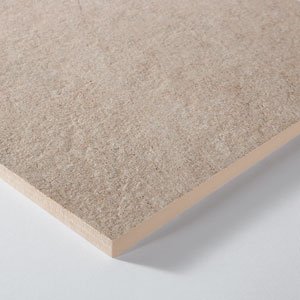
Slab 20mm
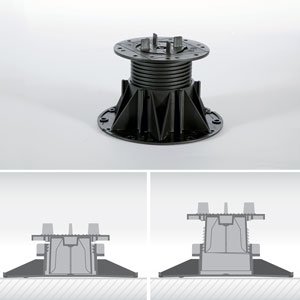
Pedestals
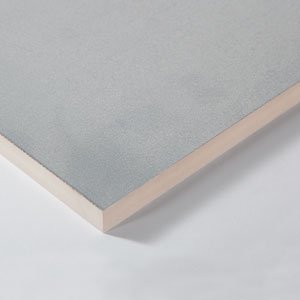
Accesories: galvanised sheet metal
